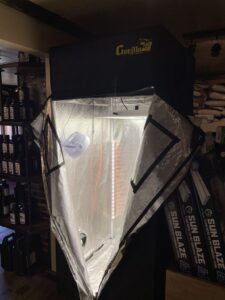Beginner's Guide to Hydroponics: An Introduction to the Basics of Hydroponic Gardening
Hydroponic gardening is an innovative way of growing plants without the use of soil. Instead, plants are grown in nutrient-rich water, which provides them with all the necessary elements for growth. Hydroponic gardening is a great way to grow plants in a controlled environment, which can result in healthier and more productive plants. If you're new to hydroponic gardening, this beginner's guide will introduce you to the basics of O’Fallon IL hydroponics gardening and help you get started.
What is Hydroponic Gardening?
Hydroponic gardening is a method of growing plants using a nutrient-rich water solution instead of soil. This method of gardening allows for complete control over the growing environment, which can result in healthier and more productive plants. Hydroponic gardening can be done indoors or outdoors, and it is suitable for a wide range of plants, including vegetables, fruits, herbs, and flowers.
Types of Hydroponic Systems
There are several types of hydroponic systems, each with its unique advantages and disadvantages. Some of the most common types of hydroponic systems include:
- Deep Water Culture (DWC) - This type of system involves suspending the plants' roots directly in nutrient-rich water.
- Nutrient Film Technique (NFT) - In this type of system, a thin film of nutrient-rich water is continuously circulated over the roots of the plants.
- Ebb and Flow (Flood and Drain) - This type of system involves flooding the root zone with nutrient-rich water and then draining it back into a reservoir.
- Aeroponic System - In this type of system, the roots of the plants are misted with a nutrient-rich water solution.
Advantages of Hydroponic Gardening
Hydroponic gardening offers several advantages over traditional soil-based gardening, including:
-
Increased Yields - Hydroponic gardening allows for complete control over the growing environment, which can result in healthier and more productive plants.
-
Space-Efficiency - Hydroponic gardens can be set up in small spaces, making them an ideal option for those with limited outdoor space.
-
Year-Round Gardening - Hydroponic gardens can be set up indoors, making it possible to grow plants year-round, regardless of the weather outside.
-
Water Conservation - Hydroponic gardening uses less water than traditional soil-based gardening, as the water is constantly reused.
-
Pest and Disease Control - Hydroponic gardens are less prone to pests and diseases than traditional soil-based gardens, as the growing environment can be more easily controlled.
Getting Started with Hydroponic Gardening
If you're interested in trying hydroponic gardening, here are the basic steps to get started:
-
Choose a hydroponic system that is suitable for your needs and space.
-
Purchase the necessary equipment, including a hydroponic system, grow lights, nutrient solution, and seeds or seedlings.
-
Set up the hydroponic system according to the manufacturer's instructions.
-
Fill the system with the nutrient-rich water solution.
-
Place the plants in the hydroponic system and provide them with the appropriate lighting and nutrients.
-
Monitor the plants regularly, checking for signs of pests, disease, or nutrient deficiencies.
Hydroponic gardening is a fun and rewarding hobby that can result in healthier and more productive plants. By following this beginner's guide to hydroponic gardening, you'll be on your way to growing your own hydroponic garden in no time!

